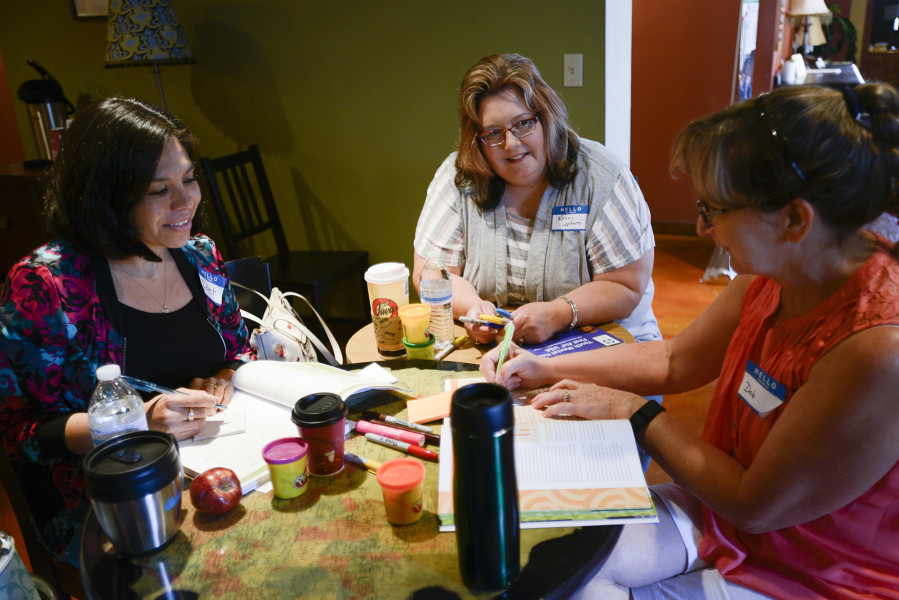As the nation grapples with mass shootings, experts say the greatest risk of gun death is actually at home: Statistics show that more than 60 percent of Americans who die from guns pull the trigger themselves. In Washington state, it’s 80 percent.
That grim reality also extends to youth in Clark County. From 2009 through 2013, firearms were used in five of the six suicides among 15- to 17-year-olds in the county, according to the most recent information available from the state Department of Health.
“With this age group, the thing that’s most frightening is impulsivity; it is so huge,” said Sue Lockett John, a spokeswoman for Forefront, a suicide-prevention group at the University of Washington. “But with firearms, there are no second chances. They are just so lethal.”
Suicide is a priority health issue that has been raised in community and regional health assessments, according to Clark County Public Health. It is the second leading cause of death for youth, the county said.
Did You Know?
• Although many causes of death are decreasing nationwide, the U.S. suicide rate is at a nearly 30-year high, according to the National Center for Health Statistics.
• Washington state’s suicide rate is 15.9 per 100,000 people, while the national rate is 12.93 per 100,000 people, according to the suicide-prevention group Forefront.
• In Washington state, 80 percent of firearm deaths are suicides, according to Forefront. Nationwide, 60 percent of firearm deaths are suicides, according to data from the Centers for Disease Control and Prevention.
According to the state health department data, 40 Clark County teens ages 15 to 17 attempted suicide between 2009 and 2013. Those who cut or poisoned themselves survived their injuries; the five who used a firearm did not. The sixth teen who died by suicide suffocated, according to the data.
The numbers raise questions among health officials: How are teens accessing guns, and why are they contemplating suicide?
Washington’s suicide rate, which is about 23 percent higher than the nation’s, also has prompted a new state law that encourages suicide-prevention training for the firearms and pharmaceutical industries. Lockett John’s hope for the initiative is that firearms owners will keep guns out of the hands of unsupervised teens.
“Teenagers should never be left alone with firearms, no matter how much training they have,” she said.
Angst or illness?
Lewis County resident Debbie Reisert knows the pain of losing a teen to firearm suicide. Her 16-year-old grandson, Brian Stephens, used a gun to kill himself in May 2009. He found the weapon unsecured in a neighbor’s trailer, Reisert said.
“It was a real tragedy that could have been prevented if people had known what to do, including myself,” said Reisert, who lives in Packwood. “I had no idea he was struggling like that. In Brian’s case, I really do believe it was an impulsive act.”
Her grandson was intelligent, articulate, and an all-around good kid, but within the last year of his life his grades began to slip, he was hanging out with the wrong crowd and exhibiting some behavioral issues. “We thought he was just goofing around. We thought he was being an adolescent, a 16-year-old,” Reisert said.
The boy left his home in Gig Harbor to live with his grandmother and get a “fresh start,” she said.
In Packwood, Brian befriended a boy who was struggling with depression and attempted suicide. What she didn’t know at the time, Reisert said, was that afterward Brian talked about also attempting suicide. School counselors called him in for a risk assessment and determined he was not at risk. Reisert was never notified.
The following week, Brian brought home a poor report card.
“I got after him and said some pretty awful things, and I’m not usually like that,” Reisert said.
Brian became upset and left home. Reisert set out to look for him, checking at friends’ homes, but no one had seen him. As night fell, she called police. One friend later came forward to say that Brian had left a phone message, saying he planned to attempt suicide.
After three days of searching, Reisert and her daughter found Brian dead in a neighbor’s trailer. It had been abandoned for months with guns inside.
“If Brian hadn’t had access to guns in that moment, I think he would still be here today,” Reisert said. “Adolescents are impulsive. I don’t think they think about the consequences.”
Curtis Miller, executive director of Connect Battle Ground, a coalition that addresses adolescent crises, said when kids experience trauma during development, it changes how they perceive the world.
“We know why kids are trying to kill themselves. There’s something affecting them in their growing years,” Miller said. “We need to look at the root cause.”
Justin Farrell, clinical director at Vancouver’s Real Life Counseling, says that science suggests that impulsivity goes hand-in-hand with adolescent development. What adults consider to be normal teenage angst can sometimes be difficult to distinguish from behavior associated with mental illness.
Teens don’t understand the long-term consequences of their actions and often have trouble seeing past a particular moment in time, Farrell said. To them, a breakup, school bullies or a bad grade may feel like the end of the world.
“It’s like having a Ferrari engine in a Pinto,” Farrell said. “(Teens) are not equipped to handle all of these things, but that’s the way their brain is going.”
New law in effect
The state’s Suicide Awareness and Prevention Education for Safer Homes Act went into effect June 9, and a key component of the law is keeping firearms out of the hands of suicidal people. It creates voluntary, online training courses about suicide prevention for firearms dealers, gun range operators and gun show promoters, and it incorporates suicide-prevention education into existing trainings, such as hunter safety courses. A separate training is mandatory for pharmacists.
The goal is to combine suicide-prevention education with information released by the firearms community, because they are a source gun owners trust, said Alan Gottlieb, founder of the Second Amendment Foundation and co-chair of the task force created by the new law.
The task force doesn’t want the firearms community to feel demonized, Gottlieb said, and it also wants to be mindful of the stigma attached to suicide.
“Gun owners aren’t mental health experts; they don’t know a lot of warning signs,” he said. “We recognize that firearms are more lethal than other methods, but that also doesn’t mean (someone who is suicidal) won’t substitute something else. … Our attempt here is to save lives and cut the suicide rate, and in a way that doesn’t mandate how people use and store their firearms.”
The task force will create and distribute suicide-prevention signs, posters and hand-outs to the firearms community. It also will put training videos online for gun dealers and their employees. Gottlieb said the materials likely won’t be ready until the start of the new year.
A pilot program also is in the works to pair suicide-prevention and gun-safety education with the distribution of devices for safe gun storage. The program will be implemented in two Washington communities with high suicide rates.
The counties for the pilot program have not yet been chosen, Lockett John said, adding that they likely will be rural, where firearm ownership is high.
About 20 other states have taken steps to bring together suicide-prevention advocates and gun owners.
But even when guns are secured, many teens still know how to access them, said Farrell, of Real Life Counseling.
“Kids figure out ways around it. If they want to get a gun, they will get a gun,” he said. “You can’t stop all things from happening, but it shouldn’t stop you from trying.”




